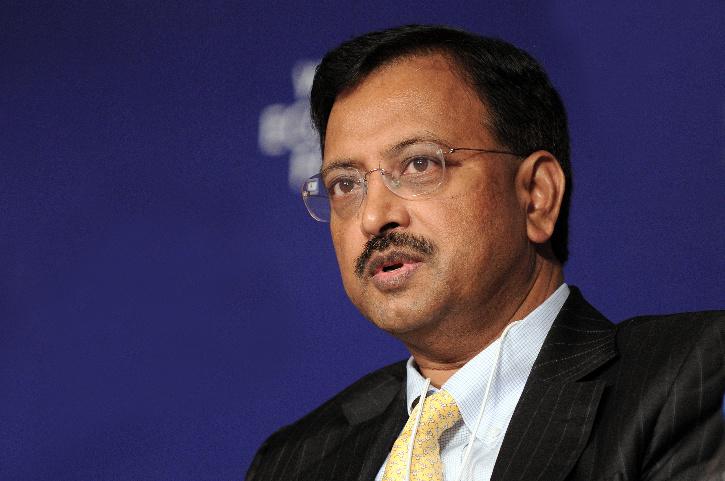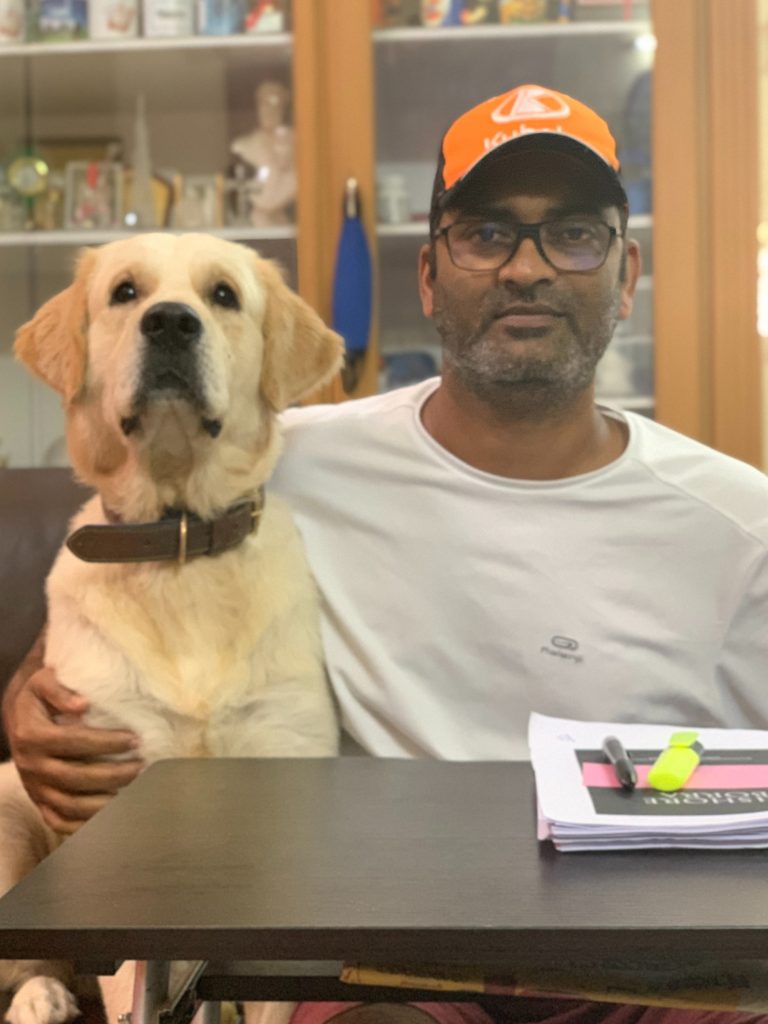
Mr. Raju is someone whom I have looked up to for a very long time, and he is the poster boy of the Information Technology Industry of Hyderabad city, which I call my home. The story of Ramalinga Raju, promoter of the blue-chip software company Satyam in Hyderabad, and his rise and fall has no parallel in the Indian IT industry. He created a $ 2 billion company in two decades, only to leave it penniless. He rose to fame due to his brilliance and business acumen but eventually lost everything due to a loss of trust and integrity. Thus, he became a stunning example of a leader without credibility. Now, he has completely disappeared from the IT industry space, even though his personal brilliance and business acumen are perhaps not lost or forgotten. Let’s take a closer look at his origins, the inspiring ‘rags-to-riches’ story, and the missteps of eagerness that eventually led to his downfall.
Mr. Byrraju Ramalinga Raju’s father was a farmer who scouted for fortune around the combined state of Andhra Pradesh from the 1950s to the 1970s. Eventually, he made money through farming and settled in Hyderabad, where he bought land and began grape cultivation. Mr. Raju was born in 1954 and was the eldest of four children. Before moving to the United States for his Masters, he earned his Bachelor’s degree from Andhra Loyola College at Vijayawada, India. After that, Mr. Raju did his Master’s in Business Administration (MBA) at Ohio University. He then returned to India in 1977 and started industrial, real estate, and construction firms with mixed results.
Rise
In 1987, Mr. Raju started Satyam computers, which eventually became one of India’s first outsourcing firms, and went public in 1992. Within the next 20 years, it had over 53,000 employees, served nearly 200 Fortune 500 companies as its clientele, and reported revenues worth $2 billion. Demonstrating his entrepreneurial skills, Raju built Satyam into an Information Technology giant. By the start of 2009, Satyam was India’s fourth-largest IT firm. Satyam has provided Information Technology and accounting services to global giants such as World Bank, General Electric, Nestle, and British Petroleum. Raju achieved all this within two decades before he turned fifty-four. He became an icon in my hometown of Hyderabad and a middle-class household name across India.
Mr. Raju was once considered one of India’s IT emperors and the Bill Gates of Andhra Pradesh. He had the rare opportunity to share the dais when Bill Clinton, the then president of the United States, visited India. Mr. Raju was one of the pioneers of offshoring and started delivering IT services to some US clients in 1991 remotely. A huge success in delivering software services, followed by the Y2K boom, helped Satyam enter the top league. Mr. Raju played a crucial role in helping Hyderabad to emerge on the world’s IT map.
Mr. Raju listed Satyam computers on the New York Stock Exchange (NYSE) in 2001. The company’s revenues exceeded the $1 billion mark in 2006 and the $2 billion mark in 2008. Raju also had a long list of awards, including the E&Y Entrepreneur of the Year Services award 1999, the Dataquest IT Man of the Year Award 2000, the Asia Business Leader Award 2002, and the Golden Peacock Award for Corporate Governance.
Philanthropy
The Byrraju Foundation, a family-run philanthropic organization by Mr. Raju, was started in July 2001 and adopted 200 villages in 6 districts of Andhra Pradesh. The foundation sponsored various programs like healthcare, environment improvement, sanitation, primary education, adult literacy, skills development, etc., impacting over 7 million people.
Mr. Raju has also set up a state-of-the-art and first-of-its-kind 24X7 emergency service named Emergency Management and Research Institute (EMRI 108) in 2005. It was modeled after the 911 service in the United States of America and gave citizens an emergency number to receive timely attention and support. It was done by providing a single toll-free number accessible from mobile and landline. EMRI expanded to 15 states and two union territories in India within no time, serving nearly 30,000 emergencies per day, covering 750 million people. While state Governments provided most of the funding, EMRI part-funded and managed public-private-partnership(PPP) mode services.
Mr. Raju was instrumental in launching another successful PPP model between Satyam and The Government of Andhra Pradesh in 2007, termed Health Management and Research Institute (HMRI). Before its launch, the local government faced a massive shortage in Primary Healthcare Centres (PHC) and Community Healthcare Centres (CHC). It resulted in a stressed public healthcare system in the state, which meant lower-quality care for its citizens. By providing a helpline for all types of health-related queries and telemedicine, HMRI reduced the public health system’s burden. The program was aimed at the rural poor who had little or no access to qualified doctors and healthcare services. It also instituted a training program for Registered Medical Practitioners (RMPs) and ran mobile health clinics.
Fall
It was mentioned that Mr. Raju had a promoters’ equity holding of 18 percent in Satyam after the initial public issue in 1992, in which he offered 82 percent to the public. At the peak of his success in the IT industry, it is unclear why Mr. Raju developed an eagerness for land acquisition, although it may have to do something with his family roots and upbringing. As Hyderabad grew fast and became a global name in the IT industry during the 20th century, Raju stepped up his land purchases. As a result, he needed more funds and began selling off his shares and his family members’ shares in Satyam. Since the land laws in Andhra Pradesh state did not allow any individual to own more than 54 acres, he began creating many privately held companies to purchase land. By the time the law caught up with him, it seems Raju had set up over 325 companies, which were, on paper, owned by his immediate and extended family. The companies were duly registered and stated their official purpose to be agricultural and allied pursuits. However, all of them had their official address at only a dozen-odd locations in Hyderabad city.
Many people say that his love for land has allegedly resulted in siphoning Satyam’s money to finance his land acquisition deals and creating fictitious revenues and profits in the company’s books. At the heart of the scandal lays his family’s traditional business and their craving for land. By 2006, Raju was buying land so furiously that the sale of his Satyam shares could no longer match his hunger for land. He also pledged the shares to financial institutions as collateral and raised money. The land was an investment for him, and he bought it to speculate or develop real estate.
Raju was smart in capitalizing on his newfound status due to his massive success in the IT industry to further his land purchasing business. This strategy worked for a while because as the city grew rapidly, so did land prices, but no profits from his land dealings came to Satyam. It is to be believed that the money went into buying more land. In the beginning, Mr. Raju’s stake in Satyam was 100 percent, but it became about 18 percent after the first public issue. And it finally reached almost zero percent by the end of 2008.
It is believed that Raju started hiding information from his shareholders from the beginning of 2001. By his own admission, Raju started fudging his book of accounts by showing higher than actual revenues and profits for Satyam to make the company look impressive and boost its share prices, to keep the company’s reins in his hands once he realized that he became a minority stakeholder.
Mr. Raju and his team had grossly inflated the revenues, operating profits, interest liabilities, and even cash balances, thereby misrepresenting the company’s accounts to all its stakeholders, including the board, the investors, and even the stock exchange. Spiraling stock prices of Satyam raised the company’s rating in the market. They also directly benefited Raju because he was gradually selling his shares in Satyam. Of course, the money was being used to buy more land and promote its construction and infrastructure.
Somewhere down the line, as Mr. Raju was busy building his empire in technology, realty, and infrastructure sectors, he seemed to have lost his sense of right and wrong and his sense of balance. Even after studying abroad, it never occurred to his mind that cooking up balance sheets to a tune of a billion dollars would probably be detected at some stage. His love for land set the stage for his debacle. For him, the whole world revolved around land and his immediate family members.
As the years progressed, Raju was encouraged by the fact that his actions went undetected. Therefore, it propelled him to fudge even more. The process reached its climax in 2008 when Raju’s fudging figures at will, resulted in Satyam becoming a $2 billion company. In this whole process, it is alleged that Raju and his team created false bank statements, customer invoices, and even nearly 13000 fake salary accounts. The company also forged board resolutions to obtain loans that were never declared on the balance sheet, raising the money to keep the scam going. By September 2008, reported sales were 25% higher than actual sales, while assets were overstated by $1.47bn. Finally, fate caught up with Mr. Raju in the form of the global recession hitting the Indian shore. As a result, Raju’s assets’ value in land started diminishing as the real estate sector went downhill.
By then, Raju was almost shutting himself off from Satyam, the company that made him what he was. He had either sold his shares in the company or pledged them to raise loans to buy more land. But, Raju’s confession states that the money was being raised to be pumped into Satyam. Financial institutions from whom Raju had borrowed money were after him because he had placed his shares with them as collateral. With share prices falling and the worth of the collateral declining, the banks wanted to be compensated. Of course, Raju did not have the cash to do so. As a result, his wealth also declined greatly.
At the end of 2008, when the market was dry, and the liquidity became a challenge, Raju hatched a plan to merge Maytas Infra, a realty company owned by his family members, with Satyam. Raju’s strategy was to cover up the missing cash of Satyam with the real assets of Maytas. The board rejected the idea as they perceived Raju trying to merge with a not-too-well-performing Maytas into Satyam. The fact of the matter is that Raju was doing the reverse; he tried to save Satyam by using Maytas. The acquisition deal raised red flags because of the deal’s value, lack of shareholders’ approval. As foreign investors backed out, Satyam was forced to back out of the deal but had already done the damage. After the acquisition move, Satyam’s investment banker DSP Merrill Lynch informed SEBI of irregularities in the company accounts.
It all came crashing down in 2009 when the Indian IT industry’s poster boy Mr. Raju resigned as chairman of Satyam Computer Services while admitting that its account books and profits were inflated over many years. And on 7th January 2009, Mr. Raju confessed to falsifying the company accounts over the past few years in his resignation letter to the board. In his confession, Mr. Raju mentioned, “What started as a marginal gap between actual operating profit and the one reflected in the books continued to grow over the years. It has attained unmanageable proportions as the size of the company’s operations grew over the years. It was like riding a tiger, not knowing how to get off without being eaten.”
Thousands of investors lost their fortune in this biggest financial fraud. It’s such an embarrassment that Mr. Raju could continue to fudge the accounts of a publicly listed company for nearly eight years reflects poorly on the country’s corporate governance. Everyone wondered what the independent directors listed in this company were doing besides collecting their fees and questioned the integrity and credibility of the auditors.
Some people call the Satyam scandal as India’s Enron Scandal. Siphoning off Satyam’s money to finance land deals and creating fictitious revenues and profits in the company’s books, Mr. Raju has compromised the position of Indian corporates in a way that nobody has ever done before. According to one estimate, by the time Mr. Raju went behind bars, his family was officially the owner of 6,800 acres of prime land in Hyderabad, Bangalore, Chennai, and Nagpur. While most of it lay vacant, Raju allegedly developed high-end commercial and housing spaces in some areas. It isn’t easy to value this land, but Raju had on record estimated the value of his 6,800 acres at Rs 6,500 crore. Even if one assumes that Raju had overestimated his land worth by 50 percent, the value of his landholdings would be approximately Rs 3,250 crores ($440 million).
It started with a small gap in the balance sheet but, over several years, ended with revenues being overstated by ₹588 crores ($80 million). In the resignation letter, Mr. Raju stated that not a single penny was used for personal gains. However, soon after, Raju and his brother, the company’s managing director, were arrested by the state Criminal Investigation Department (CID) on charges of cheating, breach of trust, conspiracy, and records falsification. As a result, the company shares fell to ₹11.50 after hitting a high of ₹588 in 2008. CID also alleged that the company fudged the records to show 13,000 extra employees.
In 2015, six years after the case first came to light, Ramalinga Raju and his brother were sentenced to 7 years in jail and fined up to ₹5.5 crores each. Apart from them, eight other associated also received rigorous punishments and were fined ₹25 lakh each. However, after just a month, all the accused were granted bail. Raju and his brother’s seven-year-long imprisonment was also suspended on furnishing personal bonds of ₹1 lakh each and two sureties of the like sum.
The good Satyam story has a happy ending and was redeemed within four months after the starting confession by Raju. None of the Satyam employees lost their jobs. After the scam, Tech Mahindra took over Satyam Computers in a government-sponsored auction, and the new entity was named Mahindra Satyam. The Satyam brand became history in 2013 with the merger of Mahindra Satyam with Tech Mahindra. Mr. Raju continued to face investigation by multiple law enforcement agencies in India. Raju’s is a gripping tale of lack of credibility laced with selfish ambition and probably a father’s love for his sons over his responsibility to the investors. It is a cautionary tale for our times.
Losing your credibility will ruin your career. If you have no credibility, people won’t trust you. And when they don’t trust you, you will become increasingly irrelevant within no time, no matter how brilliant and successful you are. Even today, I often come across some of the senior folks working in the IT industry in Hyderabad showing immense respect and gratitude towards Raju for changing their lives by providing unique work opportunities at Satyam. Mr. Raju’s story is a classic example of how a genius with no credibility will get erased from history and ignored by people.
P.S: All views expressed here are my personal views based on the below internet articles. These opinions have nothing to do with the organization I work for.
Before you go…
If you enjoyed this post, you would love my book, “Don’t Coast”
Grab your copy from the below links:
You can subscribe to my social media channels:





